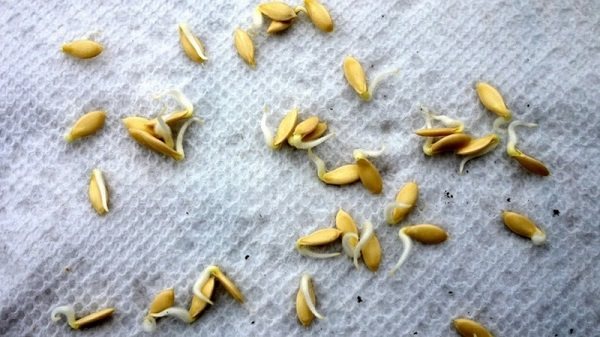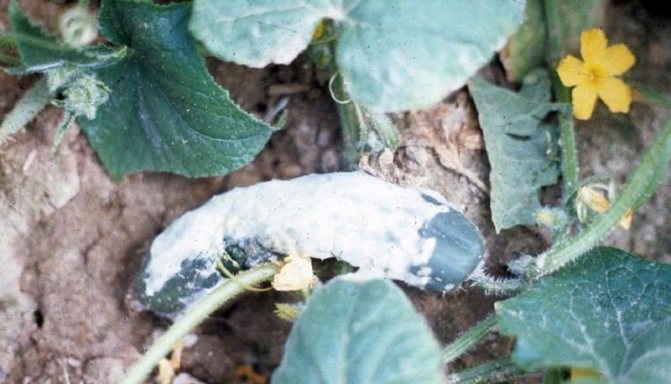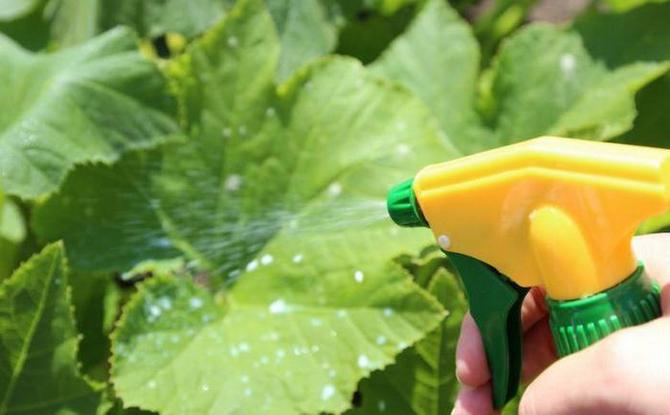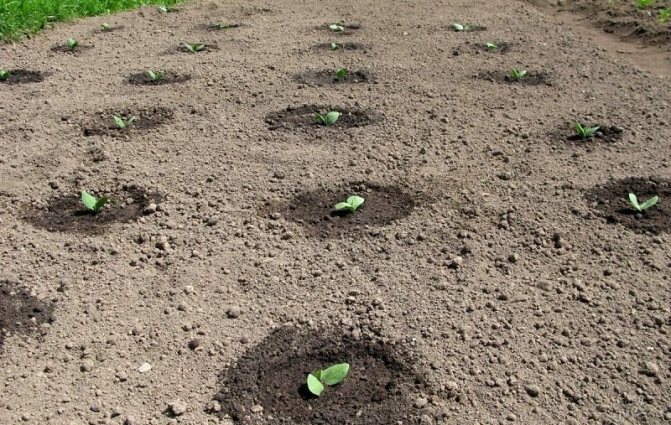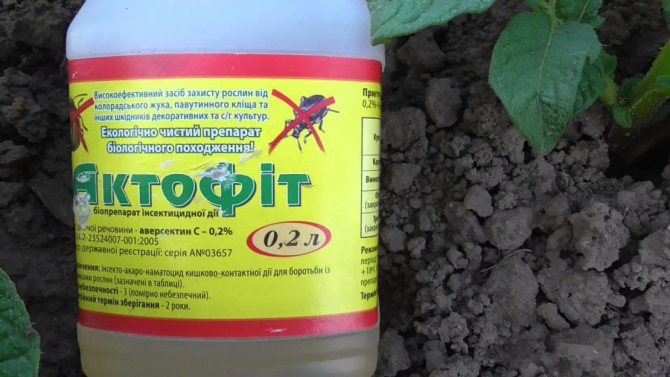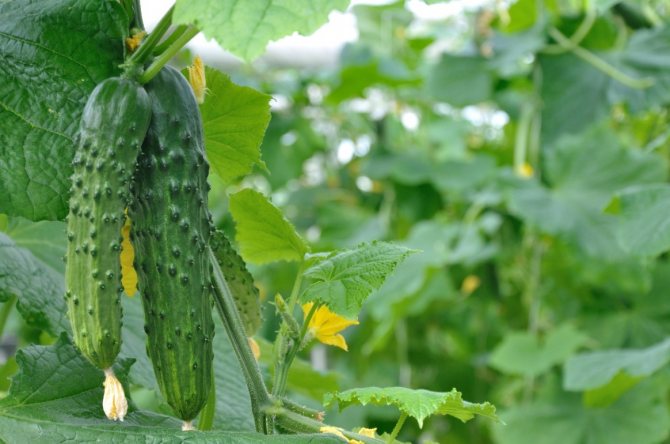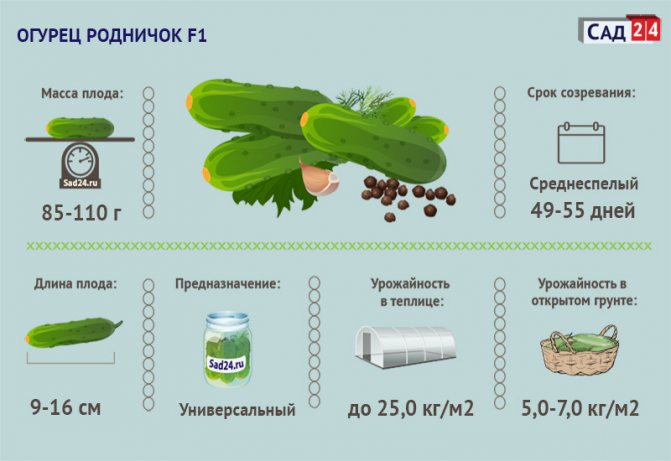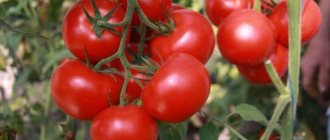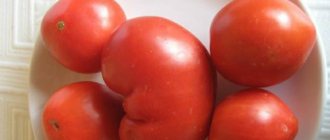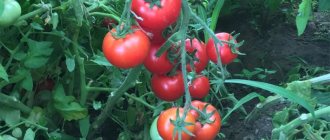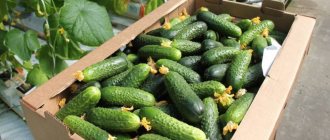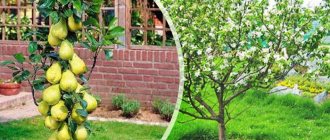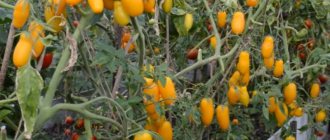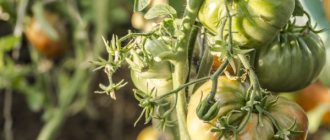Cucumber "Spring F1" is rightfully one of the most widespread, demanded and one might even say famous varieties. Breeding work on its breeding was carried out in Soviet times in the Transnistrian Research Institute of Agriculture (Bendery). The hybrid was registered in the State Registers: Russia (in 1979, originators: A. A. Mashtakov and agro) and Belarus (in 1991).
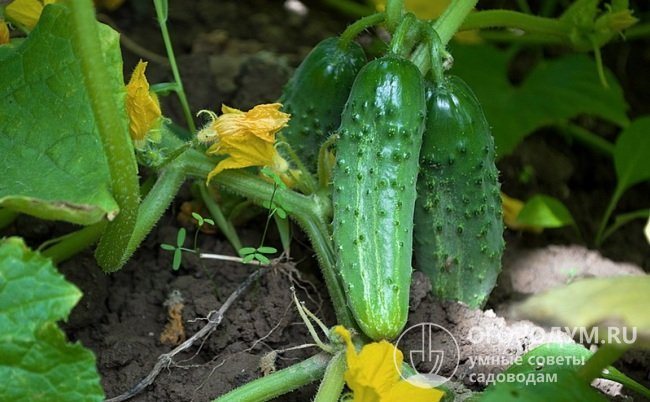
Hybrid "Rodnichok F1" - a time-tested and traditionally favorite pickled cucumber
"Spring F1" is well adapted to climatic conditions and is recommended for growing in open ground in the Northern, North-Western, Volga-Vyatka, North Caucasian, Middle Volga and Ural regions. Also suitable for cultivation in film greenhouses and under temporary shelters in personal subsidiary and farm households for the purpose of commercial production.
This hybrid is successfully grown throughout Russia and in the post-Soviet space. The hybrid is prized for its high yield, versatility and hardiness.
Here are the main characteristics of the hybrid in the table:
| Characteristic | Indicators |
| Ripening period | Mid-season: begins to bear fruit on the 45-55th day after full germination |
| Yield | In open ground 5-7 kg / m2, in plastic greenhouses - 17-25 kg / m2 |
| Plant type | Indeterminate, bee-pollinated, predominantly female flowering type |
| Appointment of Zelentsov | Universal - salad, pickling, canning |
| Disease resistance | Highly resistant to anthracnose (copperhead) and powdery mildew. Tolerant to cladosporium (olive spot), bacteriosis, ascochitosis, peronospora (downy mildew), cucumber mosaic virus |
Let's move on to a more detailed examination of the listed characteristics and features of this hybrid.
Breeding history of the variety
An application for entering the variety into the state register of domestic breeding achievements was submitted by the scientist A.A. Mashkov. in 1974, but it was introduced only 5 years later. Place of creation - Tiraspol, Transnistrian Research Institute of Agriculture. The variety belongs to hybrids resistant to powdery mildew and many other diseases.
The hybrid can be grown on any soil. At first, the breeder could not get rid of the characteristic bitterness in the hybrid, but over time it completely disappeared. It can be grown in all regions of the Russian Federation.
Description of the variety
Spring hybrid is a mid-early variety, pollination occurs with the help of bees. The plant is very tall with spreading branches, almost all flowers are female. You can harvest the crop 50-55 days after the appearance of the first leaves, but the main advantage of the variety is undulating fruiting, that is, the fruits can be harvested not immediately, but gradually, first some ripen, then others.
Fruit
Cucumbers A fontanelle with a characteristic light green hue. The mass of one is about 100 g, the length is from 9 to 12 cm. There are stripes on the peel, and small spines of black color are located over the entire surface. When cut, cucumbers give off an excellent smell, crunchy taste without voids and bitterness.
Productivity and fruiting
The fontanel hybrid is characterized by bundle formation of ovaries, several per knot, but it happens that about 5 shoots appear on the 1st plant. When grown in greenhouses, you can from 1 sq. m to collect about 18-26 kg of cucumbers. In open soil, these figures are much worse - about 6-8 kg.
In addition to high yields, the variety has an excellent presentation, which makes it suitable for commercial large-scale cultivation.
Application area
Rodnichok cucumbers are not very cheap, so many people eat them fresh. Also, the reason for using it not in conservation is the possibility of long-term storage of the crop. But many housewives used the variety for preparing winter platter, salted the fruits.
Features and differences from other varieties
The Rodnichok variety is exactly the same as other hybrids of this culture. But there is one nuance that slightly distinguishes it from others - perfectly similar fruits of the same size. Cucumbers of identical length can be removed from one plant. This feature makes the hybrid the best variety of this crop to grow for sale.
If you want to grow a variety for commercial purposes, then plant it in a greenhouse. In this case, the plants will bring the best harvest and acquire the presentation you need.
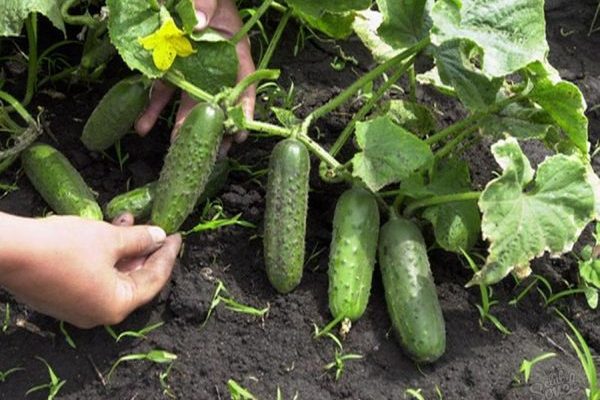

Disease and pest resistance
The variety is not afraid of downy mildew. In breeding, it is used to create other varieties and hybrids, because it is an excellent donor with an innate genetic immunity to a number of infections that harm this vegetable crop.
In the open field, the plant can attack aphids, so regularly treat the beds with a solution with soap, ash or other means from the pest. If insects are bred in the greenhouse, then in this case it is not the Spring that is to blame, but its owners.
Plant parameters
Cucumber Porthos
The Rodnichok variety can be easily recognized by the following parameters:
- Plant height - up to 3 meters.
- The size of the fruit is 10 - 12 cm in length.
- Fruit weight - 110 - 110 g.
- The shape of the fruit is cylindrical.
- Leaf size is medium.
- The shape of the leaves is heart-shaped.
- The leaves are light green in color.
The ovaries are formed in bunches, approximately 2 to 3 bunches per knot. One plant can form 3 - 5 shoots. The light green fruits are covered with black thorns and have white stripes on the side. When the fruit is cut, there are no voids inside. Flowers are dark yellow, large. Seeds are small, oval, white.
When growing, lashes can be placed horizontally (on the ground) or vertically (on wooden supports, trellises).


Fruits of the Rodnichok variety
Advantages and disadvantages
This hybrid, like other vegetable crops, has pluses and minuses, they must be taken into account when growing.
Benefits of Cucumber Rodnichok:
- excellent taste;
- beautiful appearance;
- ease of growing;
- strong immunity;
- the ability to grow on any terrain and in any conditions;
- good productivity;
- excellent transportation.
Disadvantages of Cucumber Spring:
- picky about fertilization;
- needs regular and quality watering;
- without proper storage of the crop, the fruits lose their attractive appearance.
The aforementioned disadvantages of the variety apply not only to the Spring, they relate to any vegetable crops. This variety has no specific individual disadvantages.
Application
Cucumbers "Rodnichok" are most often grown for sale. Zelentsy have exceptional product characteristics:
- Presentable look.
- Excellent taste.
- They do not fade or turn yellow for a long time.
- They perfectly tolerate transportation.
- No bitterness in the taste.
The positive quality of this variety is its versatility. Cucumbers are used both fresh for making salads and for canning. Fruits can be pickled, salted, fermented.
Planting and growing
Sowing hybrid seeds Rodnichok provides for a number of sequential measures, and it all depends on the choice of the growing place: in a greenhouse or in open soil.
Seed preparation
The fontanel hybrid has one characteristic feature - almost all the seeds are female, so you can do without the standard heating of the seed.First of all, inspect the grains and leave only beautiful and whole ones, then place them in a weak saline solution - the bad specimens will float, and the good ones will remain at the bottom.
It is not necessary to soak in different growth stimulants, especially if you bought colored seeds. Otherwise, the risk of damage to the casing will be high.
For germination of seeds of hybrid varieties of cucumbers, see the video:
You can also read an additional article on planting seeds for seedlings.
Outdoor cultivation
Carry out preparatory measures before planting cucumber seeds in the fall. Burn the old foliage, and dig up the soil. Dilute a solution of water and bleach (3%) and spray it on all wood, metal and glass surfaces.
While digging the earth, add chicken droppings or rotted cow dung into it. It must be rotten, otherwise it will burn future sprouts. If you do not have organic matter in this form on your site, then you can use ready-made mineral mixtures purchased on the market or in a special garden store. Only choose products marked "for cucumbers".
It is better to sow the Fontane seeds in rows, so it will be easier for you to take care of them in the future. Leave about 0.7 m between rows and 0.3 m between seedlings.
When planting seeds, deepen them into the soil by about 2 cm, water abundantly and cover with agrofibre. You can use a film, the main thing is that the covering material protects the plants from recurrent frost.
The seeds of this hybrid germinate very soon, and you will see the sprouts 3-4 days after sowing. If outside warmth and frost are not foreshadowed, then the covering material is removed so that the seedlings can be saturated with fresh air and warmth.
Watch the soil moisture, it should not dry out. In the season of active plant growth, add nitrogen to the soil, fertilizers with phosphorus are suitable for flowering, and during the formation of ovaries, add potassium.
Growing seedlings
Some summer residents are sure that it is easier to first grow seedlings and transplant them than to sow seeds directly into the soil. But in practice, this is not entirely true. During the cultivation of seedlings, it is necessary to monitor the humidity in the room, the air temperature, illuminate the culture with additional lamps and carry out colossal care.
As a substrate for grains, you can use ready-made mixtures for growing vegetables, if you do not have the opportunity to purchase them, you can make the mixture yourself. The main components for creating a substrate: fertile soil, peat and humus (in equal parts).
For planting seeds, the pots are treated with special means for disinfection, for example, Gamair, Fitosporin or Planriz. Pick up pots with a volume of about 50-55 mm, deepen the seeds by 1.5-2 cm.
Before the germination period of the seed, keep the temperature at + 23 ... +25 degrees Celsius. Then lower it gradually. Be sure to pick the plants into separate cups with a capacity of 45x45 mm and a volume of 80 ml.
Soil preparation and planting seedlings
Apply fertilizers to the soil directly during planting of seedlings into the soil:
- in the beds, make holes about 0.4 m deep at a distance of 0.6-0.7 m from each other;
- fill them with a layer of earth mixed with humus or compost, then add fertile soil without fertilizers;
- transfer the seedlings with a lump of earth onto it or install a pot of peat with seedlings on top;
- Cover the hole with earth and water it with 3 liters per plant.
In the future, cover the site with peat or dried grass. It will provide protection from weeds and also retain moisture in the ground for longer.
The following video shows how to dive the sprouted seeds of Rodnichok cucumbers into pots:
Care features
Any variety of cucumbers needs to meet all growing requirements.The main ones are: planting is carried out only in well-drained nutrient soil; during care, it is necessary to remember about the regularity of watering with warm, settled water and applying fertilizers.
In addition, important components of the rapid growth of the fontanel cucumber are maintaining the optimal temperature in the greenhouse, shaping the bush and spraying against pests.
Watering
Any variety of cucumbers needs high-quality watering. It is carried out only with warm water, the seedlings may not perceive cold moisture at all. You cannot pour directly under the root, otherwise it may become naked, as a result, the risk of infection with various bacterial diseases will increase.
It is also not necessary to pour a lot of water, the root system will begin to rot, and a puddle will appear around the plant. Such phenomena can often be seen on poorly drained soils.
If the weather becomes colder, then reduce the amount of watering.
In the greenhouse, before the formation of buds under 1 plant, add about 4-5 liters of water. As soon as they appear, it is necessary to stop the rapid growth of the leaves, and "force" the seedlings to focus on the ovaries. Watering is reduced, and water is added about 8 liters per 1 sq. m 1 every 3 days.
If the summer season is very hot, then in addition to regular watering, spray the glass in the greenhouse, and sprinkle the foliage with warm water from a spray bottle.
Top dressing
The introduction of manure into the soil is an excellent option for feeding crops and the Spring is no exception. But this fertilization option can only be used as a special infusion: dilute 1 liter of fresh manure in 10 liters of water and leave it to infuse for 2 weeks. Dilute the finished mixture in water in a ratio of 1:10.
Another option for feeding: 5 liters of water and 7 g of ammonium nitrate, 7 g of potassium sulfate, 10 g of superphosphate. Mix all the ingredients and water the bushes at a rate of 1 bucket per 12 plants.
Carry out the second feeding after 2 weeks, just as the plants will begin to bloom and the first ovaries will form on them. At this point, add organic matter. In addition, in 5 liters of such a product, add:
- 3-5 g nitrophoska;
- 100 ml of wood ash;
- 0.2 g of boric acid;
- 0.15 g of manganese sulfate.
In this version, 1 sq. m apply 3 liters of the product. If there is no opportunity to create such a fertilizer, then mineral fertilizing can be applied, where potassium should be much more than nitrogen.
The third feeding is carried out after another 2 weeks. Take 5 liters of water and 1.5 tbsp. l. mullein. A similar fertilizer can be used as a fourth feeding, also 2 weeks after the third.
After fertilization, the plants need high-quality watering.
Bush formation
The fontanelle is formed only on the trellis. Pinch the main shoot when it reaches the top row, the side branches above the third node.
Spraying
This procedure is carried out for the following purposes:
- for foliar fertilization - dilute 1 g of orthoboric acid, 30 g of potassium nitrate, 0.1 g of zinc salt of sulfuric acid, 60 g of superphosphate and 150 g of urea in 1 bucket of water;
- to protect against diseases and harmful insects - use Topaz or Confidor products;
- while watering - use the sprinkler method.
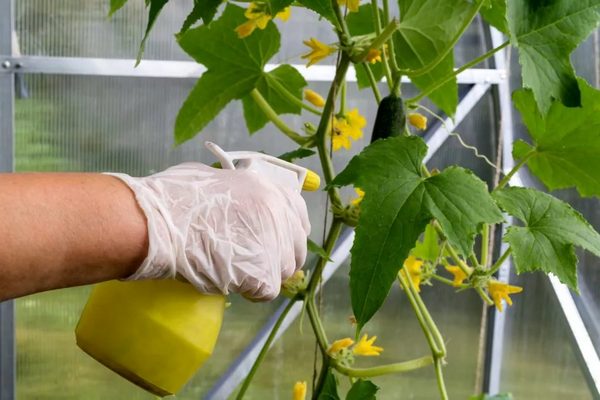

Bloom
Cucumber Pretty
The fontanelle is pollinated by bees. The plant is dominated by female flowers. Blooms in about two weeks after planting. With insufficient watering, gardeners often face such a problem as "barren flowers": flowers do not form ovaries and fall off. To solve this problem, you can do the following:
- water cucumbers more often;
- regularly feed;
- cut off part of the leaves so that the plant spends energy on the formation of fruits. This must be done very carefully so as not to damage the fragile lashes;
- spray the plants with the "ovary" agent so that fruits appear faster instead of flowers.
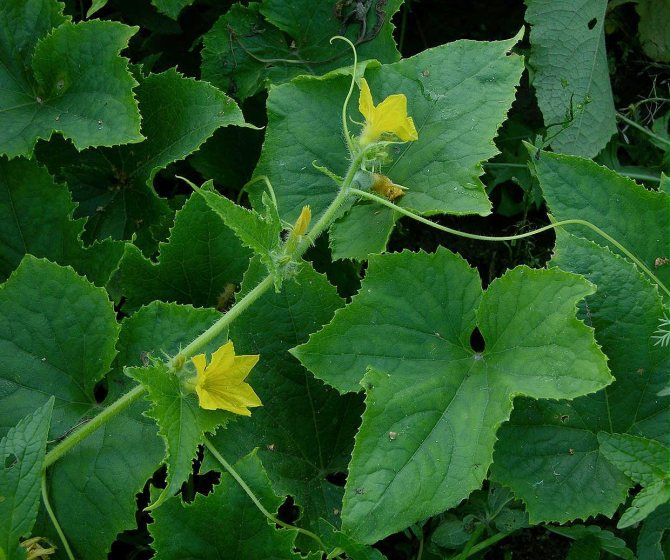

Flowering cucumber
Towards the end of flowering, it is necessary to reduce watering and carry it out about every two days.
Diseases and pests
The variety has strong immunity, but some ailments still attack it.
The most dangerous diseases:
- Powdery mildew. Symptoms: Small light spots are formed. The scourges become brown in color, and after a while they fall off. Reasons: the presence of weeds in one area and very frequent watering. Control methods: burn the leaves and the plants themselves, treat the cucumbers with sulfur powder.
- Peronosporosis. Symptoms: spots of a yellow-green hue appear with a slight bloom. They grow in size and turn purple. Methods of struggle: it is easier to carry out preventive measures in advance than to defeat the disease later. If you see a disease in the active phase, then treat the bushes with Bordeaux liquid.
- Anthracnose. Symptoms: spots of a brown-yellow hue with a pink bloom appear. Control methods: treatment of plants with Bordeaux liquid.
The main pests are melon aphids, ants, spider mites, whiteflies and slugs. They will have to fight with folk remedies and chemicals. Read more about protecting cucumbers from diseases and pests here.
Gardeners reviews
★★★★★
Vera, 56 years old, librarian, Taganrog. The fruits are excellent, all of the same size, although we grow the variety for ourselves, but we are sure that the Rodnichok would be 100% suitable for sale. I had to build trellises, as without them the lashes fall to the ground. I recommend to everyone who wants to grow this variety of cucumbers to plant it somewhere near the apiary, the bees will pollinate the plants and the amount of harvest will pleasantly surprise you.
★★★★★
Gleb, 44 years old, cameraman, Moscow. Recently I bought myself a dacha, I decided that I would grow cucumbers. I chose Rodnichka, and I never regretted it. The fruits are excellent, in a greenhouse with 1 sq. m I collect about 15 kg of cucumbers. I think this is a good indicator, so I no longer want to experiment and plant other varieties of this crop. The spring has won me over with its productivity.
Hide
Add your review
Compliance with all the rules of agricultural technology, regular prevention and quality care will help you grow the Rodnichok hybrid. And he, in turn, will thank you with delicious and crispy cucumbers.
0
How to prepare seeds
Depending on the agricultural firm, the planting material can be processed before placing it in a pack. This is evidenced by the shell on the seeds, most often it is orange, red or blue. Such seeds do not require pre-planting treatment, they are immediately embedded in the ground.
If you open the pack and find a "clean" planting material, it should be processed before planting. To prevent diseases, it is warmed up, and immediately before sowing the cucumbers, they are soaked. This will speed up the germination process.
